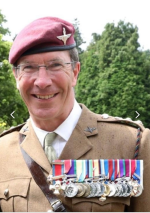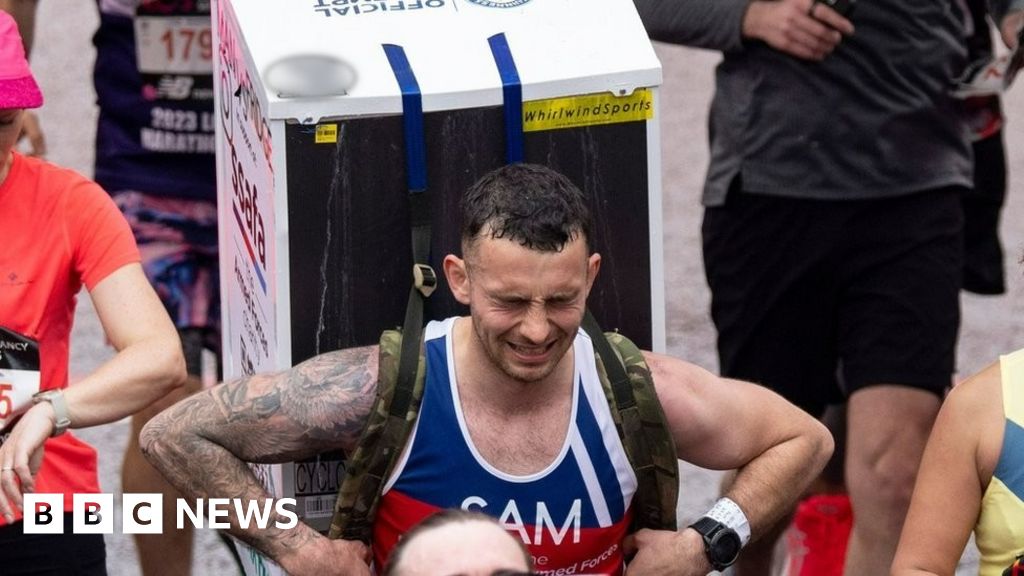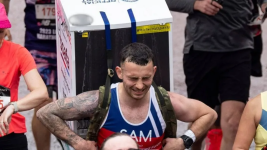Lt Gen Andy Harrison DSO MBE gave his final speech as the Regiments’ Colonel Commandant at Arnhem on the 80th Anniversary, as he retired from the British Army.
“They’d come from every part of the country. Mostly wearing black, rich and poor, some carrying small wreaths and bunches of flowers carefully wrapped in paper. Men of the Parachute Regiment, in their red berets, were lining the way.
Within a moment, there wasn’t a seat in the tiny church. In the outer aisle, the men of the Regiment sat all together. During their training in the summer of 1944, they must have come here Sunday after Sunday and sat in the same seats. John must have come here.
We stood for the National Anthem, and we sang the hymn. Then Major General Urquhart walked to the side of the church, and as we all turned to face it, he pulled the flag off the memorial. Just a gold cross on black and the Parachute emblem. Some day you must see it. It is a simple and lovely thing.
The door slowly opened, and ‘The Last Post’ sounded.
And every heart in that church broke.
You could hear the sobs, and you could just feel the pain, and the cost.
Somehow the whole place seemed too small to contain the sorrow.
Some faces stand out.
A tall, grey-haired, fine-looking father, staring straight ahead, not a tear in his eye and yet the agony of a dead child on his face.
A young Parachute officer with curly hair and his chin half shot away, holding onto the back of the bench for strength.
A young boy of twelve with flaxen hair, a long black coat, not crying either, but a wounded look, a deep misery in his eyes.
And next to him, his mother, a wealthy woman in black, oldish, stout and crying, without bothering to wipe away her tears.”
So wrote Peter Howard, describing one of the first dedication services to the fallen at Arnhem. It was held in the tiny church of the English village of Sommerby in 1945. Peter was in the congregation because 15 months after the battle his brother, Lieutenant John Howard, had still not returned from Arnhem. He never did. His body was never found.
For almost 4 decades I have sought to emulate those who parachuted onto the gorse heaths of Arnhem in 1944. They were my heroes, their example my pole star.
Yesterday, under this autumn sky, I watched my Dakota’s red jump light turned to green and took a determined step into the tumbling slipstream, placing my life at the mercy of fate and a thin parachute canopy. I’ve had better jumps, but nothing compares to what those boys went through 80 years ago
I have stood with Johnny Frost on the infamous bridge, I have had the honour of marching the second Battalion through the scarred city streets, I have listened to Kate - the Angel of Arnhem - and Tony and Jeff and John and a hundred more veterans.
“They fought on, they fought on…
With an enemy growing ever stronger, pressing them on all sided but one - and that a wide, swiftly flowing river - they fought on.
Without sleep, presently without food or water, at the end almost without ammunition, they fought on.
When no hope of victory remained, when all prospects of survival had vanished, when death alone could give them ease, they fought on.
…they performed a feat of arms that will be remembered and recounted as long as the virtues of courage and resolution have power to move the hearts of men. Now these things befell at Arnhem.”
So, for 9 long days in September 1944, thousands of young men were fighting for their lives, ensnared in the mesmerising theatre of death that engulfed them. They fought on.
Loadmasters struggled to despatch paratroopers and desperately needed stores from torching aircraft, arcing into oblivion on Holland’s unforgiving soil.
Selfless pilots, brave to their inevitable demise, making the conscious decision to try to keep their fatally compromised aircraft in the air, for just a few more seconds.
They died, so others could live.
That Pegasus still bears Bellaphron above almost every house in your beautiful town. That we are here this morning. That Holland pauses every year in hushed thanks. These are your humbling tributes to all those brave souls who made the ultimate sacrifice, Dutch, British, Polish, American, others.
And now so few survivors remain. Every year, I have seen their ranks dwindle. We are now in the company of the very final sentinels; guardians of the glorious memory of their fallen brothers.
The heroism was so deep, the scars so raw, the valour so breath-taking, that we now need not the anecdotes of living witnesses to inspire the next generation. More so than probably any other battle, Arnhem has become the by-word for courage, tenacity, and daring.
Lieutenant John Howard and every of the young Operation Market Garden warriors dared to dream. He - and they - died willing to sacrifice everything, in one bold, risk-laden, endeavour to cut short the cruelty of war.
They flew in September clouds and floated under silken canopies; they glided in impossibly fragile aircraft; they tracked singular, vulnerable routes. Young men willingly traded the serenity of hearth and home, for the chaos and carnage of combat.
They watched the life drain from friends and colleagues. They lived Binyon’s lines, were “staunch to the end against odds uncounted, and fell with their faces to the foe”.
They knew there was no glory in war, that victory is a passing chimera. But they dared to dream. And in dreaming they gave hope to the downtrodden. In the crucible of battle, Arnhem cast a reputation of indefatigable courage.
Farewell my gallant friends. Rest easy, your duty done, your legend forged. You fought on.
Beyond measure, I am humbled that my very final act as a British paratrooper is to salute you.
Lt Gen Andy Harrison DSO MBE
Arnhem 80
September 2024









www.theguardian.com



www.dailymail.co.uk

www.royalnavy.mod.uk


www.cbsnews.com

alaskabeacon.com

